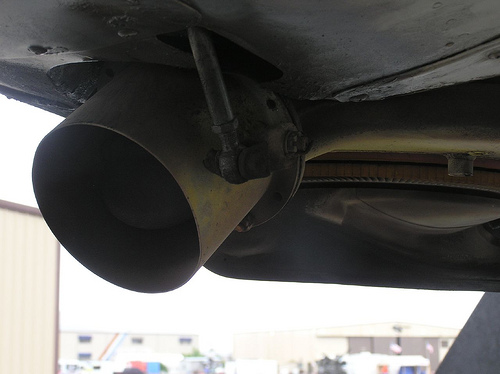Tips and tricks for lowering your fuel consumption
- 1) Reduce vehicle weight
- 2) Optimize your car
- 3) Drive at optimal speed
- 4) Drive Smoothly
- Conclusion
In order to consume less fuel, let us do everything that is possible to lighten and optimize our cars, drive smoothly and at an optimal speed.
1) Reduce vehicle weight
To reduce the weight of your vehicle, you can:
-Only bring with you the necessary items. Remove all the junk in the trunk
-Drive on half a tank instead of a full one. This would amount to about 20 kg less.
Potential savings: 1 to 2% of fuel
2) Optimize your car
To optimize your car, you can:
-Check that your tires are well inflated. Indeed, poorly inflated tires are more flattened out on the road, which leads to greater friction and thus an overconsumption of fuel.
-Invest in new technology tires from Michelin that are more fuel-efficient.
Potential savings: 1 to 3% of fuel and an additional 2% or more with the new Michelin tires.
-Remove roof racks to reduce drag on your vehicle.
Potential savings: 6 to 8% of fuel
-Drive with the windows closed so as to reduce drag on your vehicle.
Potential savings: a few % of fuel
-If you can, park your car in the shade, especially in summer. Consider placing a sun shade on your windshield to protect your car from the heat of the sun. Before turning on the air conditioning, drive with the windows open to cool the car down a little, and limit the use of the air con to times when you really need it. Otherwise, drive with your windows open, which still consumes less extra fuel than air conditioning.
Potential savings: up to 10 to 20% (since air conditioning consumes 10 to 20% extra fuel).
-Maintain the air filter to ensure good (i.e. clean) fuel combustion in your vehicle.
Potential savings: a few % of fuel

Picture found on http://www.flickr.com/photos/sbofni/2446747225/
3) Drive at optimal speed
To do this, listen to the sound of the motor and never over-rev. Switch into higher gears as soon as you can, but don't under-rev either.
On the freeway, drive at a maximum of 70 mph (110 km/h) rather than 80 mph (130km/h). This is extremely economical: during a round trip between Paris and Marseille for a current car, two French cities far from 500 miles (800 km), driving at 70 mph(110 km/h) means 47 MPG (5 l/100) instead of 80 mph (130 km/h), which means 34 MPG (7l/100) will only make you lose 67 minutes, but in return you save 4.2 Gallons (16 liters), i.e. $32.00 worth of fuel according to European prices and $16.00 in USA.
By driving more slowly, you will save about $29.40 per hour of additional driving while avoiding the risk of getting fined, having your license revoked or getting into an accident, and you will fell less stressed too.
Potential savings: 20 to 30% of fuel
4) Drive Smoothly
Drive in the same way that you would cycle. Gather as much speed as possible when going downhill (go up to the maximum legal speed) and don't put your foot down on the accelerator when you go back up - simply let the car go up on its own with the momentum accumulated. It doesn't matter if you slow down a little. I often go from 80-84 mph (130-135 km/h) at the bottom of a hill to 55-60 mph (90-100 km/h) at the top. Thanks to this, less fuel is consumed.
Potential savings: <10% of fuel
When you are approaching a red light in town areas, don't maintain your speed till the very end before braking suddenly; at least, not unless you drive a Toyota Prius that allows energy dissipated during braking to be recovered. Otherwise, just glide along in neutral towards the red light. If the light goes back to green in the meantime, you will get a headstart on the cars that are at a halt in the line next to you. And you would have avoided working the carburetor for nothing. Similarly, stop accelerating when you approach a bend. This way, if a red light that you don't see at once happens to be red, you avoid wasting fuel. Just before a downward slope, stop accelerating so as to take full advantage of the speed that you will gather. If there is a red light in the middle of a downward slope, let your car take off on its own thanks to its gravity when the light goes back to green. I have indeed gone from 0 to 70 km/h on a slope on some occasions without using the accelerator.

Toyota Prius
Finally, when you approach a village while driving along a trunk road, go into neutral if the weather conditions permit, in order to decrease from 90 to 50 km/h without stepping on the brake pedal: thanks to the inertia, you will be able to travel between 500 meters and 1 km for free, which is the distance required to go from 90 to 50 km/h (55 to 30 mph)
Potential savings: 15 to 20% of fuel
N.B: To save on fuel, take a look at the article on Clean Driving
Conclusion
You can save a good 10% or more of fuel by optimizing your car (lighter car, no roof rack, well maintained, etc.). By driving more slowly and at an optimum speed, you can save up to 20 or even 25% of fuel. Lastly, you can also save 20 to 30% of fuel when driving in town areas by restricting the use of the brake pedal and by anticipating red lights, slow driving sections and the like. This is how you can save a good third of fuel, that is, several hundreds or even thousands of dollars a year.
Be-ecolo recommends the following website Traduction Ink
You like this website? You can contact us and put this page as your home page